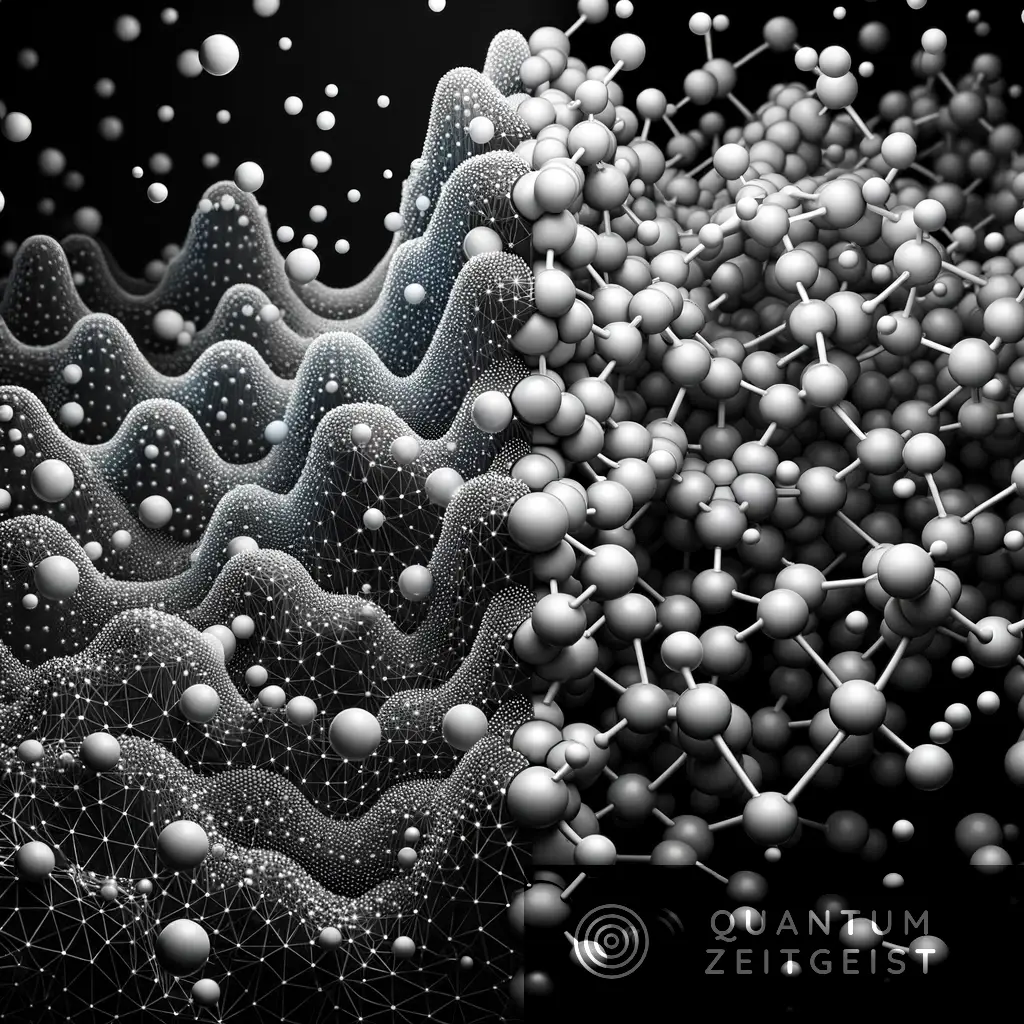Physicists, including Matteo Ippoliti from The University of Texas at Austin, have explored how measurements affect information in Google’s most powerful quantum computer. Google Sycamore can reveal new phases of quantum information. The team, led by Xiao Mi and Pedram Roushan at Google Research and Vedika Khemani at Stanford University, found that certain measurements on a quantum computer result in different structures of quantum information. This is significant as it marks the largest system in which a quantum information phase transition has been observed, requiring new tools and methods.
Quantum Physics and Particle Behaviour
Quantum physics is a field that studies the peculiar behaviour of particles when they are not being observed. These particles can exist in multiple places at the same time or share a bond with another particle located at a great distance. However, when a measurement is taken, these particles start behaving in a more predictable, classical way. The transition from quantum to classical behaviour is a topic of great interest among physicists.
Quantum Computing Research at The University of Texas
Matteo Ippoliti, an assistant professor of physics at The University of Texas at Austin, along with his colleagues, has been exploring how measurements affect information in a quantum computer. Their research, which has been published in the journal Nature, was conducted on Google’s most advanced quantum computer, which is built around a 70-qubit chip known as Sycamore.
The research team, which also included Xiao Mi and Pedram Roushan from Google Research and Vedika Khemani from Stanford University, discovered that taking certain types of measurements on a quantum computer leads to different structures, or phases, of quantum information. This is significant because measurements, which are usually passive observers, play a crucial role in this context.
Ippoliti, who worked on the theoretical aspects of the project as a postdoctoral researcher at Stanford before joining the faculty at UT Austin, stated that this is the largest system in which such a quantum information phase transition has been observed. Observing this transition required the development and application of sophisticated new tools and methods.
Advancements in Quantum Computing
This research represents a significant advancement in the field of quantum computing. The findings could potentially lead to a better understanding of the transition from quantum to classical behaviour in particles, and could also have implications for the future development of quantum computers. The role of measurements in this process is a particularly interesting aspect of the research, and further exploration of this topic could yield valuable insights.
“This is notable because measurement is usually just a spectator, while here it is really an actor that plays a fundamental role,” said Matteo Ippoliti, who worked on the theoretical aspects of the project as a postdoctoral researcher at Stanford before joining the faculty at UT Austin this year.
Google Sycamore: Quick Summary
Researchers have explored how measurements affect information in a powerful quantum computer, discovering that certain types of measurements give rise to different structures of quantum information. This is significant as it marks the largest system in which such a quantum information phase transition has been observed, requiring advanced new tools and methods.
- Quantum physics suggests that particles behave in unusual ways, such as existing in multiple places simultaneously, when not observed. However, these behaviours change to more conventional ones when a measurement is taken. Physicists are keen to understand this transition from the quantum to the classical world.
- Matteo Ippoliti, an assistant professor of physics at The University of Texas at Austin, along with his colleagues, have been investigating how measurements affect information in Google’s most powerful quantum computer, Sycamore, which is built around a 70-qubit chip.
- The research team, led by Xiao Mi and Pedram Roushan at Google Research and Vedika Khemani at Stanford University, found that taking certain types of measurements on a quantum computer results in different structures, or phases, of quantum information.
- Ippoliti noted that this is significant because measurement is usually just an observer, but in this case, it plays a fundamental role.
- This is the largest system in which such a quantum information phase transition has been observed, requiring the development of sophisticated new tools and methods.

